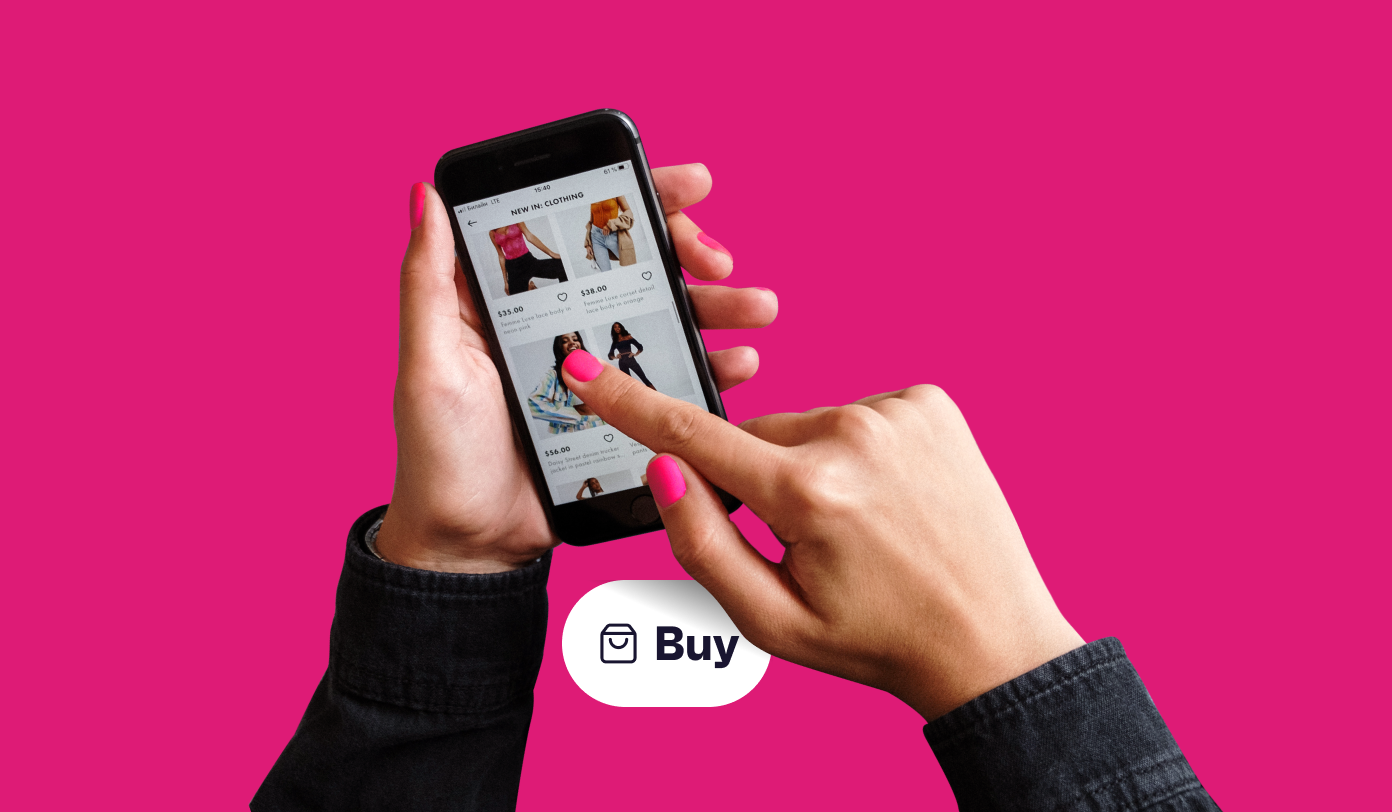Throughout the marketing universe, there’s a common misconception that new technologies automatically cancel out the previous ones. Many marketers believe that new social media platforms can replace trending players, but this isn’t always the case.
Take email, for example. Communicating with clients and marketing to the public became popular in the ‘90s and, while many new kinds of communication have gained popularity since then, email remains rock solid. In fact, 14% of consumers still discover new brands through email – higher than ads on music streaming services, podcasts, or vlogs.
So, out with the old and in the new isn’t always inevitable. If you’re ready to bust marketing myths, we’ll guide you through what ideas brands need to ditch if they want to connect with consumers in our ever-changing digital climate. Let’s get started.
- Myth 1: Brands can’t use the attention economy to their advantage
- Myth 2: Traditional marketing strategies aren’t effective
- Myth 3: Finding your target audience on the right platform isn’t important
- Myth 4: Connecting with cross-platform consumers doesn’t matter
Myth 1: Brands can’t use the attention economy to their advantage
With tech advancements moving like a freight train with no brakes, brands can feel three steps behind when they miss a beat. Here’s our advice: take a breath and look at it another way.
Instead of the new lineup (e.g. TikTok, ChatGPT) in the digital world replacing the OG’s (e.g. Instagram, Facebook), they have the opportunity to build upon one another and fulfill what the other can’t.
New and traditional media can complement each other.
In the world of media, we’ve seen categories like podcasts, TV/music streaming, and gaming solidify themselves, especially since the pandemic. The daily average of online TV streaming has increased by 20 minutes since 2018, but it’s still lower than its broadcast counterpart despite a slight dip in the last few years.

Similarly, the amount of time consumers say they listen to music streaming outnumbers those who listen to broadcast radio. However, as seen in the chart above, the daily average of radio listenership has actually increased since 2018, refuting the myth that radio is dying.
Gaming saw a boost in 2020 making marketers wonder if TV ads were getting the boot. Even though in-game ads had future potential, they didn’t negate the usefulness of TV advertising which sits at number two globally for brand discovery.
Instead of ousting the legacy media formats, they’re leveraging one another and offering new opportunities for marketers, content creators, and audiences alike.
Myth 2: Traditional marketing strategies aren’t effective
We know one thing to be true: Gen Z is turning away from Google and towards TikTok to find information. Though this big change in internet behavior is comparable to the rise of mobile devices and the shift from desktop computers to mobile internet use, it doesn’t mean that search engines and TV advertising are entirely useless.
TV ads are still in the top three for Gen Z and millennials with 28% using them to find different brands.
Search engines are the number one mode of discovery for millennials and Gen X, and sit in the top two for every generation.

Another example of traditional marketing strategies still in circulation is in-store displays. The growth of e-commerce and online shopping means that digital displays and online ads have become increasingly important, but consumers who say they find new products via in-store displays have stayed relatively stable since 2018.
Around 10,000 people walk past the Macy’s window display every hour, enough to fill a football stadium after half a day. In fact, during Christmas time, New York shuts down traffic on 5th Avenue to incentivize shoppers to visit in-store.
Ads seen on TV have steadily remained the top form of brand discovery for Baby boomers since 2017 while staying prominent among other generations as well. This also rings true for consumers in MEA, the US, and UK. Streaming services like Netflix are now introducing ads, creating new opportunities for TV advertising. Traditional advertising methods continue to be relevant even in the ‘new’ version of television.
While your marketing strategy shouldn’t ditch original media types, it’s effective to know where your audiences are, reach them on their platforms, and adapt accordingly.
Nike is an example of how to bring new life to a traditional marketing campaign. Alongside being known for its inspiring and motivational TV ads, the company recognized its audience of athletes and sports fans and reimagined its most iconic advertisements with famous athletes of the world.
Myth 3: Finding your target audience on the right platform isn’t important
In our global media landscape report, we shared that social media takes up the greatest share of audiences’ daily time in 2022. While this is mostly driven by younger audiences (Gen Z/millennials average 2 hours 45 minutes on social media per day), Gen X/baby boomers now spend just shy of 2 hours there too – up 14 minutes since 2018.
In Western countries, Instagram and TikTok are more popular with younger audiences while older consumers prefer Facebook.
Discord is emerging as a popular platform among Gen Z and has seen a steady increase over the past two years, and it’s now the sixth most popular social media app among this age group.
Discord users are more likely to be interested in esports, gaming, and computers than the average internet user, so digital marketing is the best bet for this group. They also have a higher preference than the average internet user for access to exclusive content or services.
Brands looking to gain online promotion from consumers who favor Discord may benefit from creating exclusive content, offering insider information, and providing rewards to their audience. Patreon taps into this by offering memberships to view exclusive work from content creators.

Gen X and baby boomers that use Facebook are a price-conscious bunch. They’re more likely than the average consumer to seek out reward and loyalty programs and spend time looking for the best deals. Pushing quality content surrounding sales, rewards, and limited-time offers would catch this audience’s attention.
When looking at the online purchase journey, Gen Z Instagram users are 33% more likely than the average internet user to purchase a product online if there’s an option to use a “buy” button on a social network, so brands like Vacation who have an Instagram storefront are apt to get clicks from Gen Z. Baby boomer Facebook users are 34% more likely to purchase online if there’s an easy return policy.
Understanding the preferences and behaviors of different audiences on social media platforms can help brands tailor their digital marketing strategies accordingly. It’s important to keep up with evolving social media marketing trends, but businesses don’t have to ditch the platforms already around in hopes of driving sales.
Think of it this way: our insurance company doesn’t need to make a TikTok dance to hit quota (just yet).
Myth 4: Connecting with cross-platform consumers is a waste of time
Something worth considering when planning a marketing strategy is that a significant amount of an audience exists on another platform as well, so there’s room for focus in marketing strategies. Brands should also examine if it’s worth investing in marketing on another platform when they may ultimately be speaking to the same audience.
Over 9 in 10 Gen Z Pinterest users also have an Instagram and over 8 in 10 Gen Z Instagram users also watch Youtube videos.
It’s important to point out that people who consider these platforms their favorite tend to have similar reasons for using social media. The users who say Instagram and Pinterest are their favorite apps are more likely than other users to use social media to find inspiration, suggesting that both of these apps can be utilized for discovering new products or places to visit.

On the flip side, consumers who are fans of Twitter and Reddit are both more likely than the average user to use social media for finding like-minded groups, indicating that cross-platform communities are being built.
By embracing new technologies and recognizing their complementary nature, businesses and marketers can stay ahead of the curve without abandoning existing channels and holding a zero-sum mentality. Ultimately, it’s not about choosing between old and new technologies, but rather, finding ways to integrate them to connect brands with their audience.
So, what’s the point?
Brands can let go of the myth that new technologies replace the old. Repeat after us: new and traditional media can complement each other. Similarly, traditional marketing strategies like TV advertising and in-store displays are still effective, and finding your target audience on the right platform is crucial. It’s important to adapt to the ever-changing digital climate while also knowing where your audience is so you can reach them like a pro.
Report
Global media landscape
Download now






.webp?width=495&height=317&name=pink_thumb_graphs%20(1).webp)
.webp?width=495&height=317&name=pink_thumb_letter%20(2).webp)
